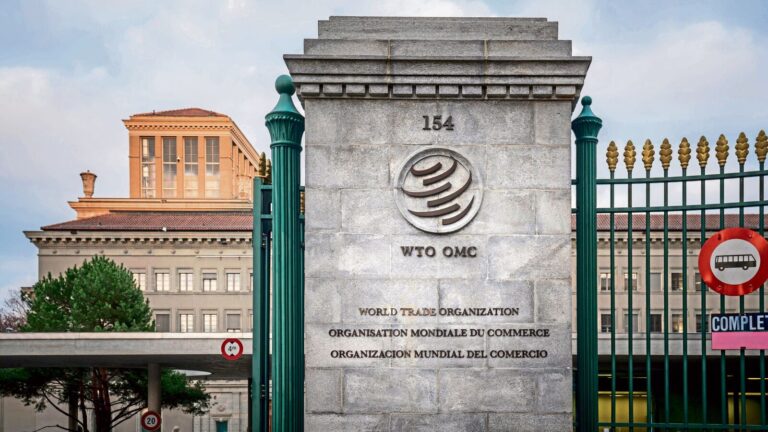India’s liberalised authorised economic operator (AEO) programme, aimed at easing customs compliance and improving global trade competitiveness for smaller firms, has been singled out for praise at the WTO for significantly increasing the participation of micro, small and medium enterprises (MSMEs) in international trade.
The WTO Secretariat’s latest compendium on MSME-related trade facilitation measures highlighted the scheme as a model initiative that makes trusted trader programmes more inclusive and accessible to smaller businesses. The report noted that MSMEs now account for about 45% of all AEO-certified entities in India—among the highest worldwide—reflecting the government’s success in turning a once-cumbersome certification process into a practical enabler of export growth.
Faster clearances, reduced inspection
Launched by Central Board of Indirect Taxes and Customs as a pilot in 2011 and revised in 2016, India’s AEO programme merges India’s earlier accredited client programme and the AEO scheme under the World Customs Organization’s SAFE Framework of Standards, which provides a global model for secure, efficient customs operations.
The programme allows businesses that meet specific compliance and security standards to be recognised as ‘trusted traders’ and thus entitled to faster clearances, deferred duty payments, and reduced inspection frequency. These benefits are particularly valuable to MSMEs, which have tight cash cycles and depend heavily on predictable logistics timelines.
The CBIC introduced the liberalised MSME package in January 2021 to make certification easier for small exporters and importers. The reforms lowered key thresholds: MSMEs can now qualify with just 10 customs documents a year instead of 25, and with two years of operational history instead of three.
The financial solvency and compliance record requirements were similarly shortened to two years. In addition, the number of annexures required for the application was drastically reduced, and processing time was cut from one month to 15 working days for tier-1 certification, and from six months to three months for tier-II.
The scheme also relaxed bank guarantee norms. MSME tier-I certificate holders now furnish only 25% of the standard requirement, while tier-II firms provide 10%, compared with up to 50% for non-certified traders. AEO-certified MSMEs also benefit from direct port entry and delivery, fast-tracked refunds, priority adjudication, and access to dedicated client relationship managers at ports — measures that together reduce logistics costs and turnaround times.
‘A game-changer’
Vinod Kumar, president of the India SME Forum, said the AEO reforms have been a game-changer for small exporters. “For years, MSMEs were at the mercy of long customs queues and heavy documentation. The AEO liberalisation has flipped that experience — making compliance simpler, clearance faster, and working capital freer,” he said.
“This recognition at the WTO is important because it shows India’s trade facilitation strategy is working at both ends — reducing transaction costs for small businesses and strengthening India’s position in global supply chains,” Kumar added.
The WTO document, released on 15 October, places India’s model alongside similar MSME facilitation initiatives in the European Union, Hong Kong (China), and the Republic of Korea. However, India’s approach is seen as unique because it embeds MSME support directly within the customs ecosystem rather than as an external subsidy or training programme, according to the document, which Mint has reviewed.
Government officials see this integration as a way to ensure consistency, transparency, and measurable results, since each certification directly translates into faster clearances and lower costs of doing business. “The CBIC continues to update the AEO system through regular consultations with MSMEs, and new digital modules are being designed to allow online filing and real-time status tracking,” a senior government official said, requesting anonymity.
The AEO framework complements India’s broader logistics modernisation drive under the PM Gati Shakti and National Logistics Policy, which aim to cut overall logistics costs to less than 8% of GDP by 2030.
Milestone on a long journey
MSMEs play a vital role in India’s exports, serving as the backbone of the country’s manufacturing and trade ecosystem. They contribute nearly 45% of India’s total exports, according to data from the MSME ministry, and form a crucial link in global value chains across sectors such as textiles, engineering goods, pharmaceuticals, leather, gems and jewellery, and processed foods.
However, only 1.36% of India’s MSMEs are engaged in exports, according to a PwC report from August 2024, highlighting a clear disconnect between the country’s overall export growth and the limited global integration of its MSME sector, the report added. A key milestone in achieving India’s goal of $1 trillion in exports will be increasing the proportion of MSMEs engaged in exports.
Pankaj Chadha, chairman of the Engineering Export Promotion Council (EEPC), said, “MSMEs not only provide employment to over 110 million people through more than 63 million enterprises, but also supply intermediate goods and components to larger industries that rely on their production networks. In the steel sector, a significant number of MSMEs are engaged in exports, and we have been demanding relief measures for the industry as the 50% US tariff has hit them very hard.”
Limited success
In recent years, the government has focused on expanding MSMEs’ export capacity through initiatives such as the liberalised AEO package, Districts as Export Hubs, One District One Product, and the Trade Infrastructure for Export Scheme (TIES).
However, according to the PwC report cited above, titled: ‘VIKSIT: An approach for India to achieve $1 trillion exports’, Indian MSMEs still face several hurdles that limit their export potential. It cited complex regulations, time-consuming certification, and repetitive documentation as key bottlenecks.
“High duties on product samples, delayed incentive disbursals, and unpredictable customs inspections further raise transaction costs. Limited access to finance and market intelligence, along with inadequate information on export procedures, continue to constrain smaller firms,” it said. It stressed the need for digitisation, improved trade finance, and wider adoption of the AEO programme to make MSMEs more competitive on exports.
Images are for reference only.Images and contents gathered automatic from google or 3rd party sources.All rights on the images and contents are with their legal original owners.

